
|   |

|   |
Canada diary: A day with Bharatanatyam dancer / choreographer Lata Pada - Sunil Kothari in Canada e-mail: sunilkothari1933@gmail.com October 29, 2008 No sooner was the Dance Festival of India 2008 at Carnegie Hall, New York over, than I received a call from Lata Pada from Mississauga, near Toronto, Canada, to visit her new studio. I was to spend some time with Dr. Mamata Niyogi Nakara at Montreal. Our conversations on dance under the aegis of Kala Bharati were scheduled later on, so after spending two days with Mamata and her husband Bans, I took the first available bus to Toronto. Lata picked me up from the bus stop and we headed straight to the new studio at Mississauga. Since I arrived in New York, there was a buzz about New York Times dance critic Alistair Macaulay's review about the 'Erasing Borders' event mounted by that indefatigable organizer Aroon Shivadasani of Indo American Arts Council (IAAC). Lata Pada's Sampradaya Dance Creations' presentation of traditional Bharatanatyam by her dancers and 'HowZaat!' an innovative work based on the theme cricket in Bharatanatyam, yoga and allied forms, had received favourable comments. Wherever I went and whomever I met, spoke eloquently about the coverage of this event, which I missed as my Canadian visa was given to me ten days late. When we arrived at Sampradaya Dance Creations studio, I was delighted to see the fabulous place. The 3,500 square foot space opened in March 2008 is simply breathtaking. Says Lata with justifiable pride: "Sunil bhai, now no one will continue saying that Indian diaspora dancers have their dance studios in the basement of their homes! My husband Hari and I have worked day and night to see this place come up with the latest state of art and cutting edge technology. It has to be South Asian Dance Headquarters - why not?" Spacious, well designed and aesthetic, the studio is a dream come true for Lata. The sprung floor is wonderful. Lata confided: "When Malavika Sarukkai visited it, she told me, 'Lata, the floor is wonderful. It caresses my feet. One can dance and dance and practice comfortably.'" Doubtless, it is true. The sprung wooden floor is a necessity. It avoids physical injuries and helps a dancer immensely. Gone are the days when one used to 'slap' 'slap' one's feet on cement floor, taking aramandi and over several years, undergoing pain in the knees!! 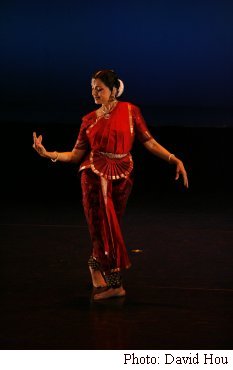 Taking a tour of the studio I realized that soon it will become a hub for training, mentoring and building audiences. "My dream is that it should become a catalyst for the growing South Asian Dance Alliance, a cohort of companies across the country. Of course my aim is to put Indian classical dance on a professional footing," says Lata with great hope. I saw on the wall, well framed posters of Lata's choreographic creations, of her students who have completed their studies and had arangetrams, poster of that memorable event of 'Remembering Subbulakshmi,' which we attended two years ago at the well appointed theatre of York University. It was the first of its kind and people still talk about it. Lata had invited her guru K Kalyanasundaram from Mumbai on that occasion and had honoured him. He happens to be my guru also and I was asked to speak a few words. Lata and I recalled that afternoon with a feeing of nostalgia. And we decided to call 'Kalimama' as he is known, on Vijayadasami day. There are a set of photographs of the entire family of guru Kalyanasundaram, which occupy a special corner in the studio. And now his son Harikrishnan and daughter-in-law Vidya's photos are also there. Harikrishnan has recently choreographed new traditional pieces Lata's students. His wife Vidya is a gifted singer. The studio opens up with doors at the back and turns into a larger hall that can accommodate more than one hundred persons. Ideal for an evening of music performance and also for a dance performance. As a matter of fact, Lata had arranged Vidya's vocal recital before the couple left for Mumbai, which was well attended. When one of our common friends Dr. Atul Tolia, a connoisseur of dance, music and films, visited the studio with me, he was so excited that he started planning with Lata to organize events for visiting musicians and dancers! Speaking about her immediate project, Lata says she has affiliated Samparadya with the Imperial Society of Teachers of Dance in the UK. This organization gives accreditation to teachers of ballet, mainly, but for the last five years to teachers of Bharatanatyam and Kathak dance also. "It will be the first step toward creating a professional stream at the academy." That is a very good decision, as it will open up opportunities for young dancers to be teachers and train future dancers. A degree always helps for a professional career. Spending time at the two big studios I realized that it would afford greater opportunities for creation and presentations of students preparing for solo Bharatanatyam recitals. Lata told me about her two latest creative projects. She had invited Mavin Khoo, the Malaysian Bharatanatyam dancer now based in London, for a collaborative work with her dancers and the dancers of Ballet Jorgon. It is an inter-cultural dance creation with 'multiple.' "Four dancers from each Canadian company presented a new work titled 'B Square' as they perform Bharatanatyam and ballet in a seamless manner. The ballet dancers are on point; the Bharatanatyam dancers are barefoot. It is not fusion of the two forms - it is more of a dialogue between two forms,"' explained Lata. I inquired about her other work 'Shunya' which was well received during the New York Erasing Borders festival. 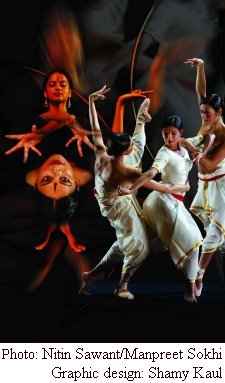
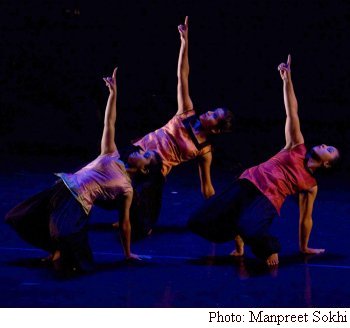
I met Nandini Krishna, who has joined Sampradaya to teach. She is trained by Mahalingam Pillai and belongs to Raja Rajeshwari Bharata Natya Kala Mandir bani. Two years ago I had met her at Bali during the International Ramayana Festival. She was teaching Bharatanatyam at the India Centre run by Indian Council for Cultural Relations. She had a motor cycle and used to drive me to the performance venue every night for a week and we had seen a number of dance-dramas from Indonesia, Cambodia, Singapore and India. It was a pleasure meeting her again in Mississauga. She is pursuing her studies of Ph.D also. 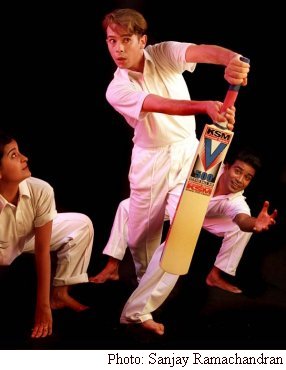
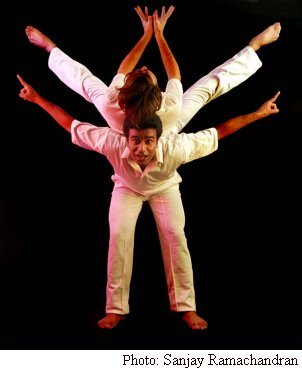
I was also invited to Ottawa for that function. Rama was arriving from Madison. Therefore Lata said why not we all meet and I can leave for Ottawa after spending a day with them. Rama, musicians G S Rajan and others, Lata and I spoke at length about how to present classical Bharatanatyam and other dances abroad without losing its intrinsic quality and yet make it accessible to American audience and also elsewhere. It is a serious issue and all exponents of classical dance forms will have to address this issue seriously. Under Kalaangan series, Lata is presenting top dancers from India, thus offering an opportunity to young dancers in Toronto to see the best. Of course it involves a lot of hard work and she does not plan to turn Kalaangan into an impresario unit. But whenever it is possible, she would welcome such presentations. 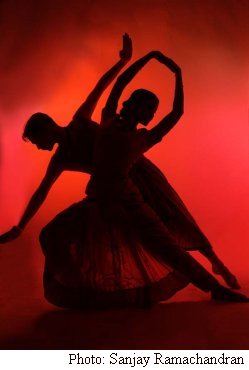 Lata had to meet a theatre person who wanted Lata to assist in choreographing a children's production and the rehearsals were to take place in London. Besides her own forthcoming tour of India with 'Vivarta,' a choreographic work, Lata was busy working out rehearsal schedules, teaching classes, a flying visit to Bangalore, London and back in Mississauga. From morning, attending to several household chores, leaving instructions with her staff at Sampradaya studio, talking on phone and rushing to Toronto to attend to some urgent work, then meeting the theatre person over a cup of coffee and from there driving down to York University where she was to lecture to a large class of nearly 150 students - it was a busy schedule. I accompanied her in her car, talking, exchanging notes, listening to her talking on the phone while driving, instructing a young dancer seeking her guidance on which school to join to study Bharatanatyam, a general overview of Sri Lankan dancers, their dance schools and what have you!! It was raining cats and dogs on that day - it was beastly weather and we had to reach in time for the lecture in the evening - but Lata managed just in time. Seeing her multi-tasking I was reminded of what Protima Bedi used to tell me about Indian Diaspora women: "They are like a Swiss knife with six blades, and they can do many things - look after beloved husband, prepare breakfast, send off children to school, see husband off, prepare lunch and if working, go to office also. Amazing!" How true - Lata provided an example. She parked the car in a basement garage of the York University and we almost ran, crossing several buildings and reached the classroom. The young students had a general class on culture. Lata with a small mike attached to her dress, spoke in crystal clear tone, narrating her own journey into dance, explaining about Bharatanatyam as a dance form and screening a few excerpts from cricket inspired 'HowZaat,' which the students loved. There was pin-drop silence and at the end of her lecture a few students came up to her and took the address of her studio to visit her and two girls wished to study. Packing in a lot of activities, on the way back home she told me about the mushroom growth of dance schools by Sri Lankan immigrants. According to her, there are at least 40 schools of South Asian Dance. She shared with me the bleak scenario when immigrant communities do not take advantage of the financial grants offered by the Canadian government. "In Sampradaya, the students spend up to 12 years training; they start at 4 years of age and then they give up except at the unpaid, community arts level, to pursue paying professions. We have been losing valuable assets: dancers who have been trained well but who are not going into profession either through lack of opportunities or lack of knowledge of opportunities. I explain to them to apply, learn how to apply for grants, take advantage of the financial support the Canadian government offers. It is an uphill task. Many Sri Lankan dance schools do not want to take any assistance. They are happy with what they are doing. This does not help the dance scene," she regretted. Lata also takes active interest in several official bodies. She is now a presence for the past 40 years, working on many levels for the dance scene. She did her MFA in Dance from York University, serves on the Arts and Entertainment Committee of the Mississauga Living Arts Centre, is a founding member of the South Asian Advisory Committee at Royal Ontario Museum. Innumerable awards and honours have been bestowed upon her for her contribution to the art and dance scene in Toronto, Canada. The significant awards include the 1995 Mississauga Arts Award, and the 2000 New Pioneers Award. She serves on the Advisory Committee of several Arts Foundations and is on the Board of Canadian Dance Assembly. She delivers lectures on dance advocacy and voices her concerns about dance and the dancers. In a multi- cultural society, Lata has carved her own niche with hard work and dedication. In 'Revealed by Fire,' an autobiographical dance work of personal tragedy, Lata has shown how dance has reaffirmed her faith in life. It is through dance that she has overcome the agony and shown a way of how an artiste can inspire a generation of artistes. In her journey she has through dance, found solace, spiritual bliss and a reason to live and pass on the legacy of dance to a new and young generation. Responses  Dr. Sunil Kothari, dance historian, scholar, author, is a renowned dance critic, having written for The Times of India group of publications for more than 40 years. He is a regular contributor to Dance Magazine, New York. Dr. Kothari is a globetrotter, attending several national, international dance conferences and dance festivals. He has to his credit more than 14 definitive works on Indian classical dance forms. Kothari was a Fulbright Professor and has taught at the Dance Department, New York University; has lectured at several Universities in USA, UK, France, Australia, Indonesia and Japan. He has been Vice President of World Dance Alliance Asia Pacific (2000-2008) and is Vice President of World Dance Alliance Asia Pacific India chapter, based in New Delhi. A regular contributor to narthaki.com, Dr Kothari is honored by the President of India with the civil honor of Padma Shri and Sangeet Natak Akademi award. He recently received the Senior Critic award from Dance Critics Association, NYC. |